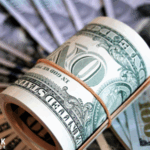As inflation intensifies in the economy, American consumers are faced with the challenge of adjusting their spending patterns. The latest data from the Bureau of Labor Statistics reveals a nuanced picture, indicating the resilient nature of American consumers in navigating increased costs in daily essentials such as food and shelter. By reevaluating their consumption habits and prioritizing essential goods, households across the United States display an adaptive strategy in overcoming economic pressures.
Previous reports had put emphasis on inflationary pressures from various sectors, highlighting an upward trend in the cost of essentials which strained the budgets of many households. Recent figures continue this narrative, noting a persistent increase in shelter and food prices. The anticipation of increasing rates by various economic analysts emphasizes continued vigilance necessary for budgeting and financial management.
Shelter and Food Prices Continue to Climb
September saw a 0.2% rise in shelter costs, marking a 3.6% increase over the past year. Meanwhile, rents rose 0.2% from August and 3.4% year over year, with the owners’ equivalent rent seeing the smallest monthly rise since 2021 at just 0.1%. The parallel increase in food prices reflects an overall rise of 0.2% monthly and 3.1% annually, driven by specific food groups like cereals, bakery products, and nonalcoholic beverages.
What Are Other Categories Indicating?
In September, energy prices grew by 1.5%, led by a rise of 1.1% in gasoline costs. Furthermore, retail prices for apparel, furniture, bedding, and appliances also witnessed an increase, signaling mixed trends across different categories. Despite these fluctuating prices, spending habits and consumer resilience maintain a steady pace.
Nominal wages continue to trail behind inflation, affecting purchasing power in real terms. Consumers are responding to these economic challenges by opting for store brands and reducing non-essential spending, while strategic credit card usage is aiding in managing cash flow. Though data from the PYMNTS report highlights various strategies adopted by consumers, many still face difficulty in enhancing their savings, as only a small percentage reported an increase in savings over recent months.
“Inflation and high prices remain at the forefront of consumers’ minds,” explained a statement from the University of Michigan’s Consumer Sentiment Index.
Earnings reports from major banks indicate sustained consumer engagement in card spending and deposit activity, despite the inflationary environment. This suggests that though inflation persists, consumers continuously adapt their financial behaviors to mitigate its effects.
The enduring resilience and adaptability of U.S. consumers demonstrate their ability to absorb financial shocks without drastic changes to overall spending. This adaptability showcases a dynamic response to inflation rather than a static financial struggle, allowing shoppers to align their consumption with budgetary limitations. Looking ahead, the flexibility and strategizing visible among consumers could serve as critical elements in sustaining economic distribution, even if inflationary forces persist.










